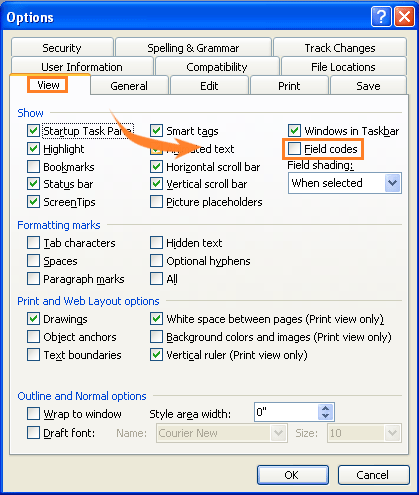

The page break will isolate the information above enabling the footer you are in to be altered without affecting the footers above. Then go to the footer on the next page, double click to open it and click on the Link to Previous button. To do this in Word 2007 go to Page Layout and Breaks (or the Insert menu and Page Break in Word 2003).

The key trick to changing footer content is to make sure a Next Page Break has been inserted on the page above. This function can easily be switched off if you wanted a different header or footer for example on page 3 to page 4 because it was relating to a different section.

Link to Previous in footers literally does that, it links to the previous footer. Link to Previous and Alternate Page Numbers in Headers and Footers The next time you wish to use this text all you need to do is type in the autotext name e.g. A box will appear type in the name you wish to use for your autotext, set the Quick Part as Autotext and then press Save. To save text as an autotext Quick Part in Word 2007, highlight the word, sentence or paragraph, go to the Insert toolbar, click Quick Parts and select Save Selection to Quick Parts Gallery (previously used Quick Parts will appear in the gallery view). When this name is typed and then F3 is pressed it completes the rest of the words, sentences or paragraphs. Instead of the program „auto completing‟, the words, sentences and paragraphs can be saved under an autotext name e.g. Word 2007 introduced a substitute tool to Autotext. Autotext can be used in headers and footers too it is not limited to just the content of the document. This function can also be user defined which is handy if you need to repeatedly insert the same paragraph into documents. Autotext is a function more commonly found in Word 2003 that auto completes words, sentences and paragraphs as they are typed. Quick Parts and Building Blocks replaced the majority of Autotext in Word 2007. To copy formatting to several points throughout the document but not to all of the content at once, double click on the icon to keep it selected. The Format Painter will copy any formatting, it does not limit itself to styles and numbering, but it is case sensitive. To use this tool, place the cursor in the text containing the formatting which is to be copied, click on the Format Painter, then highlight the text you wish to copy the formatting to.

The icon is the same in all Word versions – in 2003 it can be found on the Format toolbar, in 2007 it can be found on the first group of the Home toolbar. This is a brilliant tool for those who are not savy with styles and numbering as it copies formatting from one part of the document to another. The user will then be given the options to remove all hidden metadata, or only specified content. The system will then search for metadata and other content overall, or by specific content e.g. To remove hidden metadata go to the Office button (big circular button in the top left corner of Word), click Prepare, Inspect Document, and the Inspect button. The function in the current version of Word is referred to as Inspect Document. If the document was sent electronically and was intercepted by an unwanted party, the information could be used inappropriately.Īll Word versions have the functionality to remove Metadata, but Word 2007 has made the process simpler, by bringing the functions to the forefront which means fewer clicks to the user. properties, firm name, author‟s name etc. Metadata is the confidential information within a document i.e. Today we’re going to show you 15 very useful MS Word tricks you probably never heard of. Word offers users comprehensive support in creating letters, reports, etc., including spell checking, text formatting facilities like tables, WordArt, and lot’s more. This application is made by Microsoft, well known for Windows, and is part of the Microsoft Office package that contains Excel, Access and PowerPoint. Microsoft Office Word is one of the most used word processors in the world. 15 Useful MS Word Tricks you Probably Didn’t Know


 0 kommentar(er)
0 kommentar(er)
